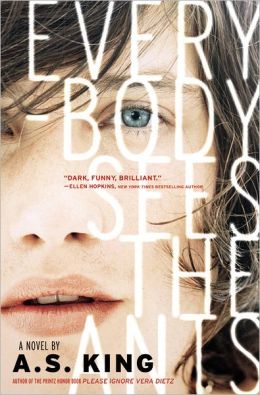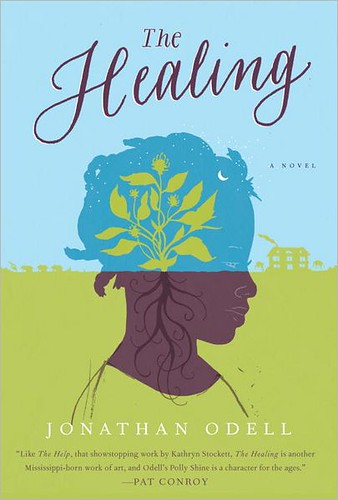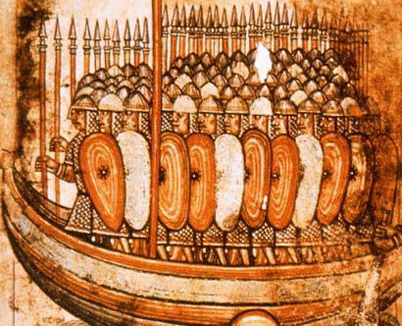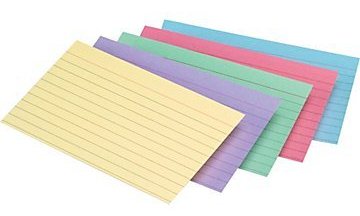Panthers are invited once again to take part in the Media Center’s Florida Teens Read/Paw Prints program for this year. Students who read one of the FTR or PP books may come to the media center to take a quiz. A passing score is 70%. Students who pass will be given a symbolic charm for that book and a quiz certificate. Extra credit may be earned by reading if you show me your successful certificate! We only allow a student to retake a quiz if the teacher authorizes it. Students who pass the most quizzes will be invited to the teen literature celebration in May.

Bick, Ilsa. Ashes.
An electromagnetic pulse flashes across the sky, destroying every electronic device, wiping out every computerized system, and killing billions. Alex hiked into the woods to say good-bye to her dead parents and her personal demons. Now desperate to find out what happened after the pulse crushes her to the ground, Alex meets up with Tom—a young soldier—and Ellie, a girl whose grandfather was killed by the EMP. For this improvised family and the others who are spared, it’s now a question of who can be trusted and who is no longer human.

Dowell, Frances O’Roark. Ten Miles Past Normal.
Janie Gorman is smart and creative and a little bit funky…but what she really wants to be is normal. Because living on an isolated farm with her modern-hippy parents is decidedly not normal, no matter how delicious the goat cheese. High school gives Janie the chance to prove to her suburban peers that she’s just like them, but before long she realizes normal is completely overrated, and pretty dull. If she’s going to learn how to live large (and forget the haters), Janie will have to give up the quest and make room in her life for things from the fringe—like jam band, righteous chocolate, small acts of great bravery, and a boy named Monster.

Gagnon, Michelle. Don’t Turn Around.
Sixteen-year-old Noa has been a victim of the system ever since her parents died. Now living off the grid and trusting no one, she uses her hacking skills to stay anonymous and alone. But when she wakes up on a table in a warehouse with an IV in her arm and no memory of how she got there, Noa starts to wish she had someone on her side. Enter Peter Gregory. A rich kid and the leader of a hacker alliance, Peter needs people with Noa’s talents on his team. Especially after a shady corporation threatens his life in no uncertain terms. But what Noa and Peter don’t realize is that Noa holds the key to a terrible secret, and there are those who’d stop at nothing to silence her for good.

Green, John. The Fault in our Stars.
At 16, Hazel Grace Lancaster, a three-year stage IV–cancer survivor, is clinically depressed. To help her deal with this, her doctor sends her to a weekly support group where she meets Augustus Waters, a fellow cancer survivor, and the two fall in love. Both kids are preternaturally intelligent, and Hazel is fascinated with a novel about cancer called An Imperial Affliction. Most particularly, she longs to know what happened to its characters after an ambiguous ending. To find out, the enterprising Augustus makes it possible for them to travel to Amsterdam, where Imperial’s author, an expatriate American, lives. What happens when they meet him is significant.

Hartman, Rachel. Seraphina.
Four decades of peace have done little to ease the mistrust between humans and dragons in the kingdom of Goredd. Folding themselves into human shape, dragons attend court as ambassadors, and lend their rational, mathematical minds to universities as scholars and teachers. As the treaty’s anniversary draws near, however, tensions are high. Seraphina Dombegh has reason to fear both sides. An unusually gifted musician, she joins the court just as a member of the royal family is murdered—in suspiciously draconian fashion. Seraphina is drawn into the investigation, partnering with the captain of the Queen’s Guard, the dangerously perceptive Prince Lucian Kiggs. While they begin to uncover hints of a sinister plot to destroy the peace, Seraphina struggles to protect her own secret, the secret behind her musical gift, one so terrible that its discovery could mean her very life.

King, A. S. Everybody Sees the Ants.
Lucky Linderman didn’t ask for his life. He didn’t ask his grandfather not to come home from the Vietnam War. He didn’t ask for a father who never got over it. He didn’t ask for a mother who keeps pretending their dysfunctional family is fine. And he didn’t ask to be the target of Nader McMillan’s relentless bullying, which has finally gone too far. But Lucky has a secret–one that helps him wade through the mundane torture of his life. In his dreams, Lucky escapes to the war-ridden jungles of Laos–the prison his grandfather couldn’t escape–where Lucky can be a real man, an adventurer, and a hero. It’s dangerous and wild, and it’s a place where his life just might be worth living. But how long can Lucky keep hiding in his dreams before reality forces its way inside?

Levithan, David. Every Day.
Every day a different body. Every day a different life. Every day in love with the same girl. There’s never any warning about where it will be or who it will be. A has made peace with that, even established guidelines by which to live: Never get too attached. Avoid being noticed. Do not interfere. It’s all fine until the morning that A wakes up in the body of Justin and meets Justin’s girlfriend, Rhiannon. From that moment, the rules by which A has been living no longer apply. Because finally A has found someone he wants to be with—day in, day out, day after day.

Martinez, Jessica. Virtuosity.
Now is not the time for Carmen to fall in love. And Jeremy is hands-down the wrong guy for her to fall for. He is infuriating, arrogant, and the only person who can stand in the way of Carmen getting the one thing she wants most: to win the prestigious Guarneri competition. Carmen’s whole life is violin, and until she met Jeremy, her whole focus was winning. But what if Jeremy isn’t just hot…what if Jeremy is better? Carmen knows that kissing Jeremy can’t end well, but she just can’t stay away. Nobody else understands her–and riles her up–like he does. Still, she can’t trust him with her biggest secret: She is so desperate to win she takes anti-anxiety drugs to perform, and what started as an easy fix has become a hungry addiction. Carmen is sick of not feeling anything on stage and even more sick of always doing what she’s told, doing what’s expected. Sometimes, being on top just means you have a long way to fall….

Odell, Jonathan. The Healing.
Plantation mistress Amanda Satterfield’s intense grief over losing her daughter crosses the line into madness when she takes a newborn slave child as her own and names her Granada. Troubled by his wife’s disturbing mental state and concerned about a mysterious plague that is sweeping through the plantation’s slave quarters, Master Satterfield purchases Polly Shine, a slave woman known as a healer who immediately senses a spark of the same gift in Granada. Soon, a domestic battle of wills begins, leading to a tragedy that weaves together three generations of strong Southern women.

Price, Lissa. Starters.
Callie lost her parents when the Spore Wars wiped out everyone between the ages of twenty and sixty. She and her little brother, Tyler, go on the run, living as squatters with their friend Michael and fighting off renegades who would kill them for a cookie. Callie’s only hope is Prime Destinations, a disturbing place in Beverly Hills run by a mysterious figure known as the Old Man. He hires teens to rent their bodies to Enders—seniors who want to be young again. Callie, desperate for the money that will keep her, Tyler, and Michael alive, agrees to be a donor. But the neurochip they place in Callie’s head malfunctions and she wakes up in the life of her renter. Callie soon discovers that her renter intends to do more than party—and that Prime Destinations’ plans are more evil than she could ever have imagined.

Rodriguez, Gaby. The Pregnancy Project: A Memoir.
Growing up, Gaby Rodriguez was often told she would end up a teen mom. After all, her mother and her older sisters had gotten pregnant as teenagers; from an outsider’s perspective, it was practically a family tradition. Gaby had ambitions that didn’t include teen motherhood. But she wondered: how would she be treated if she “lived down” to others’ expectations? Would everyone ignore the years she put into being a good student and see her as just another pregnant teen statistic with no future? These questions sparked Gaby’s high school senior project: faking her own pregnancy to see how her family, friends, and community would react. What she learned changed her life forever—and made international headlines in the process.

St. John, Warren. Outcasts United: The Story of a Refugee Soccer Team that Changed a Town.
Clarkston, Georgia, was a typical Southern town until it was designated a refugee settlement center in the 1990s, becoming the first American home for scores of families in flight from the world’s war zones—from Liberia and Sudan to Iraq and Afghanistan. Suddenly Clarkston’s streets were filled with women wearing the hijab, the smells of cumin and curry, and kids of all colors playing soccer in any open space they could find. The town also became home to Luma Mufleh, an American-educated Jordanian woman who founded a youth soccer team to unify Clarkston’s refugee children and keep them off the streets. These kids named themselves the Fugees. Set against the backdrop of an American town that without its consent had become a vast social experiment, Outcasts United follows a pivotal season in the life of the Fugees and their charismatic coach.

Stevenson, Sarah Jamila. The Latte Rebellion.
Hoping to raise money for a post-graduation trip to London, Asha Jamison and her best friend Carey decide to sell T-shirts promoting the Latte Rebellion, a club that raises awareness of mixed-race students. But seemingly overnight, their “cause” goes viral and the T-shirts become a nationwide social movement. As new chapters spring up from coast to coast, Asha realizes that her simple marketing plan has taken on a life of its own—and it’s starting to ruin hers. Asha’s once-stellar grades begin to slip, threatening her Ivy League dreams, while her friendship with Carey hangs by a thread. And when the peaceful underground movement spins out of control, Asha’s school launches a disciplinary hearing. Facing expulsion, Asha must decide how much she’s willing to risk for something she truly believes in.

Stiefvater, Maggie. The Raven Boys.
Every year, Blue Sargent stands next to her clairvoyant mother as the soon-to-be dead walk past. Blue never sees them–until this year, when a boy emerges from the dark and speaks to her. His name is Gansey, a rich student at Aglionby, the local private school. Blue has a policy of staying away from Aglionby boys. Known as Raven Boys, they can only mean trouble. But Blue is drawn to Gansey, in a way she can’t entirely explain. He is on a quest that has encompassed three other Raven Boys: Adam, the scholarship student who resents the privilege around him; Ronan, the fierce soul whose emotions range from anger to despair; and Noah, the taciturn watcher who notices many things but says very little. For as long as she can remember, Blue has been warned that she will cause her true love to die. She doesn’t believe in true love, and never thought this would be a problem. But as her life becomes caught up in the strange and sinister world of the Raven Boys, she’s not so sure anymore.

Vaughn, Carrie. Steel.
Sixteen-year-old Jill has fought in dozens of fencing tournaments, but she has never held a sharpened blade. When she finds a corroded sword piece on a Caribbean beach, she is instantly intrigued and pockets it as her own personal treasure. The broken tip holds secrets, though, and it transports Jill through time to the deck of a pirate ship. Stranded in the past and surrounded by strangers, she is forced to sign on as crew. But a pirate’s life is bloody and brief, and as Jill learns about the dark magic that brought her there, she forms a desperate scheme to get home—one that risks everything in a duel to the death with a villainous pirate captain.
Happy Reading!





 Note cards
Note cards Single Sheets
Single Sheets Dropbox
Dropbox
 Now that we have completed our reading of Lord of the Flies, you will be submitting a college-style essay as your final assessment in lieu of a test. The objective is to reveal your knowledge of the work through your use of specific examples from the selected text to support your viewpoint.
Now that we have completed our reading of Lord of the Flies, you will be submitting a college-style essay as your final assessment in lieu of a test. The objective is to reveal your knowledge of the work through your use of specific examples from the selected text to support your viewpoint.














Thug Notes: Beowulf
Did somebody holler for a hero? Salty language and adult themes ahead. Proceed with caution.
Comments Off on Thug Notes: Beowulf
Filed under Honors IV
Tagged as analysis, Beowulf, commentary